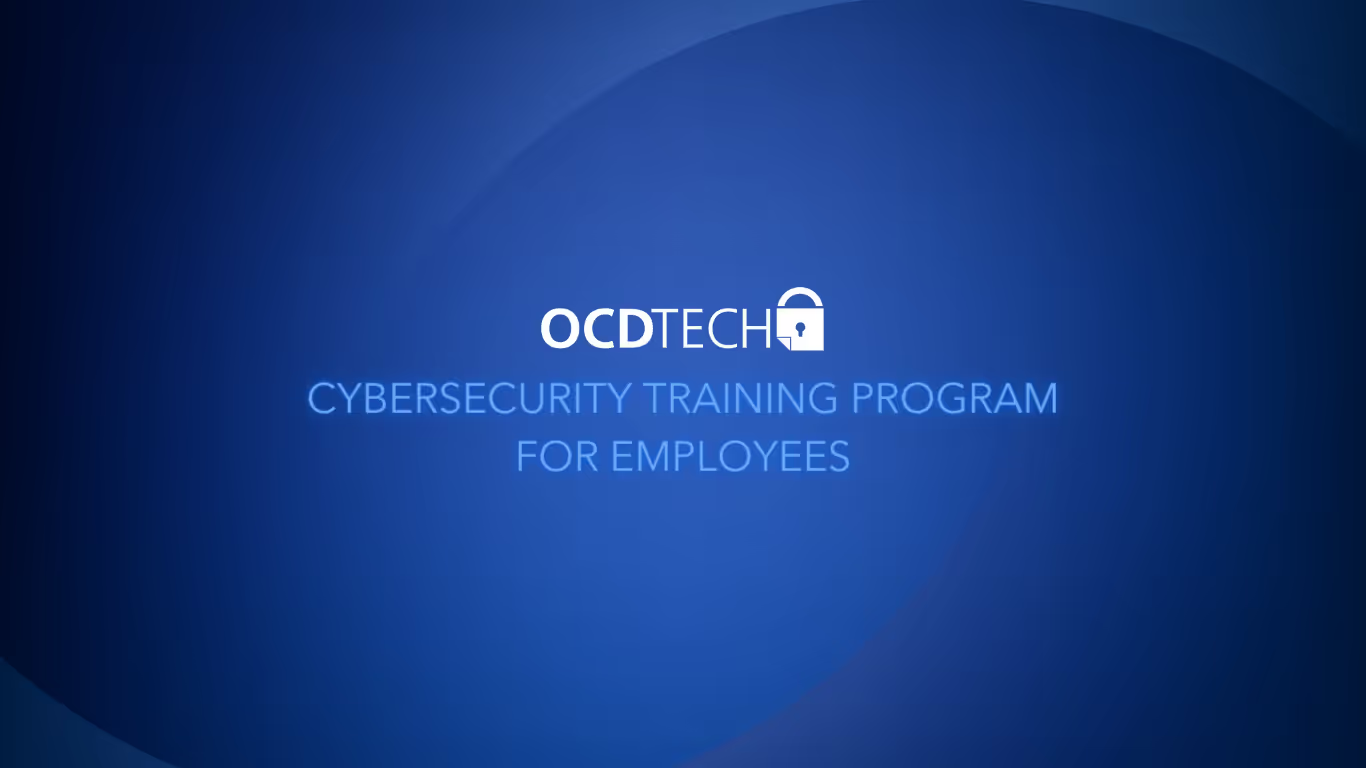By
OCD Tech
February 14, 2024
•
7
min read

According to data from 2023, human error contributed to over 80% of data breaches and cyber attacks. This underscores the critical importance of educating and training employees to recognize and mitigate security risks effectively. In this article, we'll delve into the essentials of creating a robust cybersecurity training program for employees, equipping your workforce with the knowledge and skills needed to defend against evolving cyber threats.
Before delving into the specifics of cybersecurity training, it's essential to grasp why the human factor is so crucial. Despite advancements in technology, human error, negligence, and lack of awareness continue to expose organizations to significant cyber risks. Whether it's falling victim to phishing scams, using weak passwords, or inadvertently disclosing sensitive information, employees play a pivotal role in either fortifying or compromising an organization's cybersecurity posture.
Measuring Effectiveness
To ensure the effectiveness of your cybersecurity training program, establish key performance indicators (KPIs) and metrics to measure its impact. Track metrics such as the number of reported security incidents, phishing email click rates, and employee compliance with security policies. Additionally, conduct periodic assessments and surveys to gauge employees' knowledge, awareness, and confidence in handling cybersecurity threats.
Investing in a comprehensive cybersecurity training program for employees is critical for building a resilient workforce and mitigating cyber risks. By educating employees about cybersecurity best practices, raising awareness of potential threats, and fostering a culture of security, organizations can empower their employees to become active participants in defending against cyber attacks.
Remember, cybersecurity is everyone's responsibility, and a well-trained workforce is your organization's first line of defense against evolving cyber threats.
Contact our team of experts. WE SECURE YOUR PATH.

Audit. Security. Assurance.
IT Audit | Cybersecurity | IT Assurance | IT Security Consultants – OCD Tech is a technology consulting firm serving the IT security and consulting needs of businesses in Boston (MA), Braintree (MA) and across New England. We primarily serve Fortune 500 companies including auto dealers, financial institutions, higher education, government contractors, and not-for-profit organizations with SOC 2 reporting, CMMC readiness, IT Security Audits, Penetration Testing and Vulnerability Assessments. We also provide dark web monitoring, DFARS compliance, and IT general controls review.
Contact Info
.svg)
OCD Tech
.svg)
25 BHOP, Suite 407, Braintree MA, 02184
.svg)
844-623-8324
.svg)
https://ocd-tech.com
Follow Us
Videos
Check Out the Latest Videos From OCD Tech!
Services
SOC Reporting Services
– SOC 2 ® Readiness Assessment
– SOC 2 ®
– SOC 3 ®
– SOC for Cybersecurity ®
IT Advisory Services
– IT Vulnerability Assessment
– Penetration Testing
– Privileged Access Management
– Social Engineering
– WISP
– General IT Controls Review
IT Government Compliance Services
– CMMC
– DFARS Compliance
– FTC Safeguards vCISO